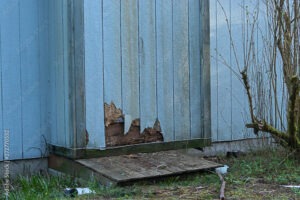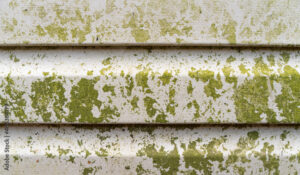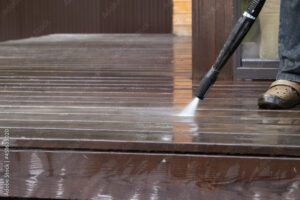
A home’s exterior siding is like the skin on a human body — it protects and shields the home’s interior from the elements. Neglecting its care can result in costly repairs and a decrease in property value. But fear not, DIY enthusiasts! With a little guidance, you can learn to spot issues, understand what they mean, and even fix them yourself. This comprehensive guide is tailored to the proactive homeowner looking to maintain and improve the longevity of their home’s exterior siding.
Understanding Your Siding Materials
Before jumping into maintenance tips, it’s essential to familiarize yourself with the different types of exterior siding, their benefits, and common issues.
Vinyl Siding
Vinyl is a popular choice for its durability and low maintenance. However, it’s not invincible. Common issues include warping, fading, and cracking, often caused by extreme weather conditions.
Wood Siding
With its natural beauty, wood siding is a timeless choice. It’s also prone to rot, insect infestations, and water damage if not properly maintained.
Fiber Cement Siding
Offering the look of wood without susceptibility, fiber cement is fire-resistant and durable. However, it can still crack, fade, and attract mold if exposed to excessive moisture.
Follow and subscribe to our YouTube channel for tons of Great information.
Website constructionconsumeradvocacyinstitute.com
Podcast anchor.fm/galloway
www.youtube.com/@ConstructionConsumerAdvocacy
Aluminum Siding
Once an industry standard, aluminum siding is now less common. It’s resistant to rust but can dent and is prone to fading.
Stucco Siding
Stucco is a cement-like material that is a favorite for its textured finish. It’s susceptible to cracks and water infiltration, which can lead to mold and mildew.
Each type of siding requires different maintenance approaches and has unique warning signs that it might need your attention.
Step-by-Step Inspection Process
Inspecting your siding is not a one-time deal. Seasonal checks, especially after extreme weather, are crucial. Utilize this step-by-step process to ensure a thorough examination:
Step 1: Choose the Right Time
Pick a day with good weather visibility to see your siding clearly. Overcast days can make it difficult to spot issues with fading or discoloration.
Step 2: Safety First
Use a sturdy ladder and have a partner spot you. Never attempt a siding inspection alone, especially at heights.
Step 3: General Observations
Take a few steps back from your home and look for overall signs of damage. Pay attention to discolorations, bulges, or missing pieces.
Step 4: Close Inspection
Walk around the house and examine the siding up close. Look for mold, mildew, rot, or any holes from insects.
Step 5: Interior Check
If possible, inspect the inside walls for signs of moisture or water damage, which may indicate an issue with the exterior siding.
Step 6: Look Up!
It’s crucial to check eaves and gutters for any sign of water damage that could be affecting higher sections of siding.
Step 7: Record Findings
Keep a detailed log of all findings, including the date of the inspection and any repairs needed.
Completing this inspection at least twice a year will help you catch issues early and prevent them from worsening.
Corrective Actions for Common Siding Issues
When you’ve identified a problem, the next step is fixing it. Here are corrective actions for a variety of common siding issues:
Cracks in Vinyl or Fiber Cement Siding
For small cracks, use a specialized sealant, available at hardware stores. For significant damage, consider replacing the affected siding panels.
Rot on Wood Siding

Use a chisel or saw to remove the affected area and replace it with new siding. Ensure proper ventilation behind the new section to prevent future rot.
Mold and Mildew on Any Surface
A mixture of water and household bleach can remove most mold and mildew. Wear gloves and eye protection when applying and ensure proper ventilation.

Insect Damage

Begin by inspecting for nests or hives and take the appropriate measures to remove them safely. Then treat the affected area with an insecticide and proceed with the necessary repair.
Faded or Discolored Siding
In the case of superficial issues, mild detergent, water, and a soft brush can brighten the surface. For more severe fading, repainting or replacing the siding may be necessary.
In each case, it’s critical to follow guidelines specific to the siding material.
Advanced Tips and Tools
For the DIYer looking to step up their game, here are a few more advanced tips and tools to consider.
Pressure Washing Safely
Pressure washing can be an effective

way to clean siding, but it must be done correctly. Use a low-pressure setting and be cautious not to direct the stream upward, beneath the siding, where it can push water into wall cavities.
Painting Your Siding
When repainting, make sure the surface is clean and dry. Use high-quality paints and primers designed for your specific siding type. Follow manufacturer guidelines for the best results.
Installing Siding
For those confident in their skills, installing new siding panels can save significant costs. Ensure to follow proper nailing and sealing techniques for a water-tight installation.
Regular Maintenance
The best way to avoid significant problems is consistent care. Regularly clean your siding, maintain the surrounding environment (like trees and shrubbery), and be mindful of any changes that might affect your home’s exterior.
By investing time in these tasks now, you’ll save both time and money on more substantial repairs in the future.
Proactive Steps for Siding Longevity
While knowing how to repair issues as they arise is excellent, a proactive approach ensures your siding lasts as long as possible.
Invest in Professional Inspections
A professional inspection every few years can catch issues you might overlook. They can also offer tailored maintenance advice based on the specific situation of your home.
Know When to Call in the Pros
Some issues, like extensive rot or foundational damage, are beyond the scope of a DIY project. Know when it’s time to bring in a professional to handle the job.
Stay Informed about Local Regulations
Some areas have strict regulations about the type of siding you can use. Stay informed about these regulations, especially if you’re considering a remodel or replacement.
By staying ahead of the game, you’ll be the master of your home’s exterior, protecting it from the elements and ensuring its beauty for years to come.
Conclusion
Your home’s exterior siding is more than a decorative feature; it’s a critical component of its structure. With the tips in this guide, you can confidently inspect, maintain, and even repair your siding, saving on costs and potentially increasing your property’s value. Home improvement shouldn’t be about waiting for something to go wrong, but about taking preventive action. Arm yourself with knowledge, and don’t be afraid to get your hands dirty — your home will thank you for it.
Follow and subscribe to our YouTube channel for tons of Great information.
Website constructionconsumeradvocacyinstitute.com
Podcast anchor.fm/galloway
